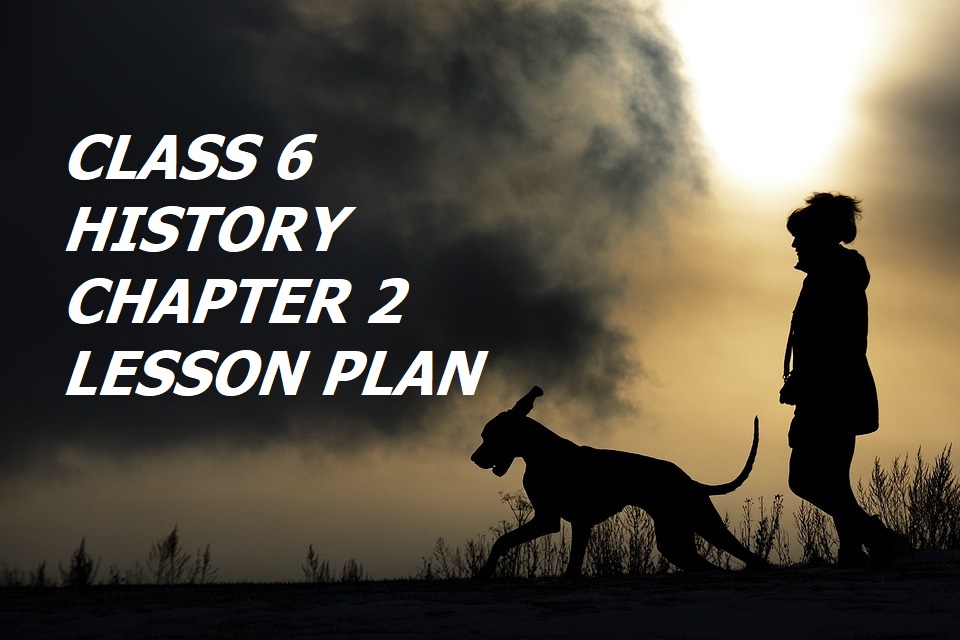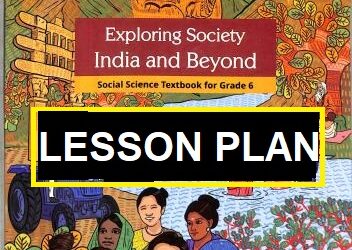Lesson Plan Of Class 6 History Chapter 2 From Hunting ….
Class 6 History Chapter 2 “From Hunting -Gathering To Growing Food” is a wonderful chapter that is full of information. If you are planning to teach this chapter in this session, you must be looking for a detailed lesson plan. Here, through this blog article, we are trying to prepare a lesson plan which is definitely going to be helpful to you. This lesson plan for Class 6 History Chapter 2 has many activities which will help you to engage your students in the class. Of course, your children will also love doing these activities from class 6 History Chapter 2. So, let’s begin class 6 History Chapter 2 “From Hunting -Gathering To Growing Food”. For the lesson plan of chapter 1 click on the link Class 6 History Chapter 1 What, Where, How, and When Lesson Plan 2023
Lesson Plan Of Class 6 History Chapter 2 From Hunting – Gathering To…
Title: From Hunting-Gathering to Growing Food
Grade Level: 6th Grade
Objective:
- Students will learn about the transition from hunting and gathering to agriculture and how it impacted human societies.
- Students will understand the advantages and disadvantages of hunting-gathering and agriculture.
- Students will explore the development of agriculture in different parts of the world.
Materials / Teaching Aids:
- PowerPoint presentation
- Whiteboard and markers
- Pictures and videos showing different types of farming practices
- Handouts for note-taking
- Map of the world
Teaching Points:
- The earliest people: why were they on the move
- How do we know about these people
- Choosing a place to live in
- Finding out about the fire
- A changing environment
- The beginning of farming and herding
- Towards a settled life
Checking Previous Knowledge
The teacher begins the class by asking the students what they know about the history of human societies.
Also ask students to describe how early humans survived before the invention of agriculture.
To draw the attention of the students and to create interest in the topic the teacher Shows a picture of an agricultural field and asks
students to identify the crops.
Class 6 Geography Chapter1 The Earth In The Solar System Lesson Plan
Lesson Plan Of Class 6 History Chapter 2 From Hunting – Gathering To…
Procedure:
DAY 1:
Topic: The transition from hunting-gathering to agriculture (30 minutes)
- Present a PowerPoint presentation that explains how humans transitioned from hunting-gathering to agriculture.
- Discuss the advantages and disadvantages of hunting-gathering and agriculture.
- Provide examples of early agricultural societies and their development.
DAY 2:
Topic: Prehistoric Times (20 minutes)
- Explain that early humans lived in small groups and relied on hunting and gathering for survival.
- Discuss the benefits and challenges of this lifestyle.
- Show pictures and discuss the types of foods that were available during this time.
Day 3:
Topic: Development of agriculture in different parts of the world (45 minutes)
- Show pictures and videos of different types of farming practices around the world.
- Discuss the environmental factors that led to the development of agriculture in different regions.
- Use a map of the world to illustrate the different types of crops grown in different regions.
Teaching Methodology
The teacher while teaching chapter 1 “How, When, and where” will use different methods of teaching.
Through these teaching methods, the teacher will introduce students to important dates and important topics.
These topics will help them understand the underlying principles of a subject.
Class VI – Maps Lesson Plan That Connects You With Your Students
Lesson Plan Of Class 6 History Chapter 2 From Hunting – Gathering To…
Activities To Be Conducted
Activity 1
- Provide each student with a small pot, soil, and seeds.
- Instruct students to plant their seeds and observe their growth.
- Have students write a short reflection on the importance of agriculture in their lives.
Activity 2
Topic: Food Foraging Simulation:
Divide the class into small groups and have each group “forage” for food.
Provide each group with a list of wild edible plants and animals, and instruct them to gather as much food as they can within a specified time
limit.
Afterward, have each group present their findings and discuss how the availability of wild food affected their survival.
Activity 3
Topic: Agricultural Innovations Timeline
Create a timeline of key agricultural innovations, such as the invention of the plow, irrigation systems, and crop rotation.
Have students research each innovation and create a poster or presentation on its impact on agriculture and food production.
Activity 4
Topic: Seed Swap and Planting
Have each student bring in seeds from a plant they would like to grow.
Set up a seed swap where students can trade seeds and learn about new plants.
Then, have students plant their seeds in a small garden plot and tend to them throughout the semester, observing and recording their
growth.
Activity 5
Topic: Food Systems Mapping
Have students create a map that shows the flow of food from its origin to their plate.
Start with hunting and gathering and move through the various stages of agricultural development.
Along the way, discuss the social, economic, and environmental impacts of each stage on food production and consumption.
Assessment Criteria
Assessment criteria used by a teacher in class can vary depending on the goals and objectives of the lesson or course.
The teacher will assess the performance of the students under the following criteria.
1st Knowledge and Understanding (2 marks)
2nd Application and Analysis (2 marks)
3rd Communication and Expression (2 marks)
4th Critical Thinking and Problem-Solving (2 marks)
5th Creativity and Innovation. (2 marks)
Values Imparted:
After teaching History Chapter 1 “How, when, and where”: here are three values that could be imparted to students:
Develops a better understanding of the world.
Respects diversity and develop an understanding of Historical events.
Accepts change in a positive way.
Learning Outcome
The learning outcome of teaching from hunting-gathering to growing food may include:
Knowledge
Students will have a better understanding of the transition from hunting and gathering to agriculture and the impact it had on human
development.
Comprehension
Students will be able to identify the benefits and challenges of the agricultural revolution and explain why agriculture was important for
human growth and development.
Application
Students will be able to apply their understanding of agriculture by planting and observing the growth of seeds.
Analysis
Students will be able to analyze the different types of agriculture that developed over time and how they impacted human development.
Evaluation
Students will be able to evaluate the impact of agriculture on human populations and civilization.
Synthesis
Students will be able to synthesize their knowledge of agriculture and its impact on human development to draw conclusions about the
importance of agriculture in their lives.
Remedial Measure
Pair and share
Children sitting on the left side of the row will explain the chapter to the children sitting on their right.
Lesson Plan Of Class 6 History Chapter 2 From Hunting – Gathering To…
Conclusion:
The transition from hunting and gathering to agriculture was a significant milestone in human history.
This change marked the beginning of civilization and the development of societies as we know them today.
Early humans relied on hunting and gathering for their survival.
They lived in small groups and had to constantly move in search of food.
This lifestyle had its benefits, but it also came with many challenges, including the difficulty of finding food in certain seasons and regions.
8 Facts About Latitudes and Longitudes Which Is Not Explained In Schools





0 Comments